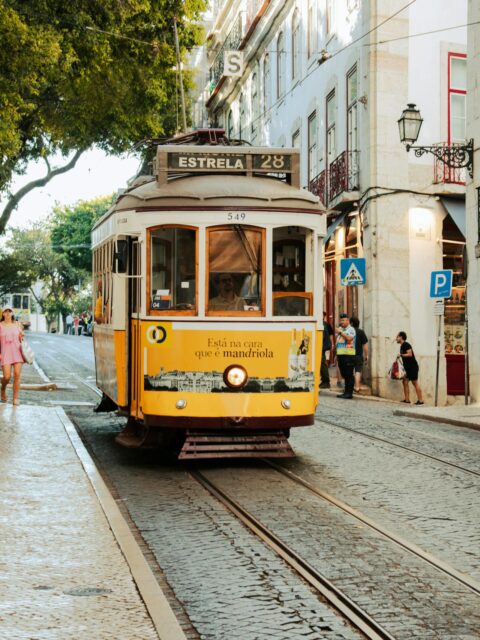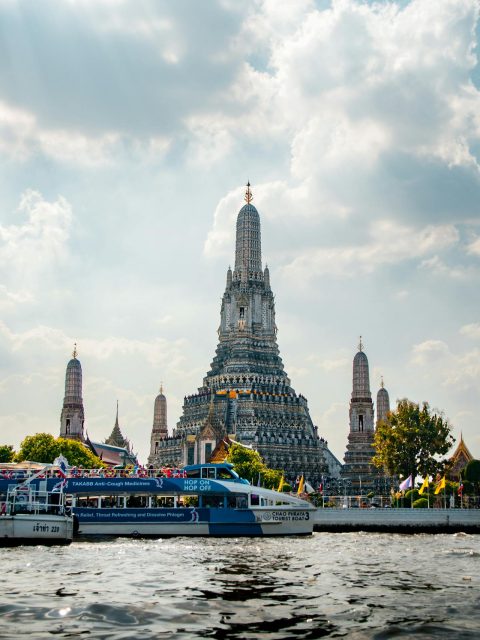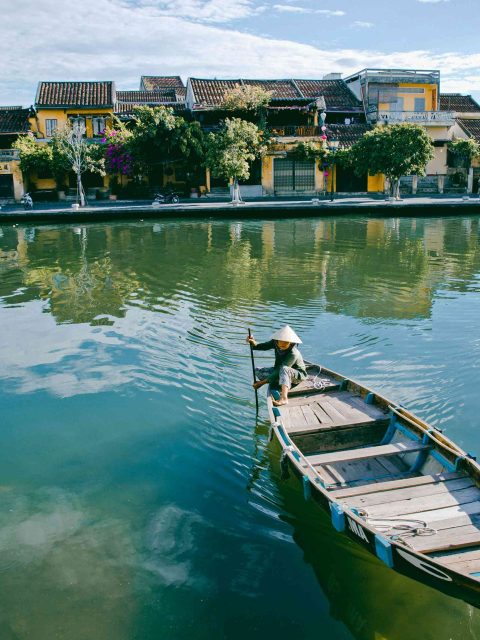Three Days in Budapest with a Comprehensive Travel Itinerary
Budapest, often referred to as the ‘Paris of the East,’ is a gem of Europe and among the most romantic cities you could visit. If you are planning a Budapest travel itinerary, this city promises an unforgettable journey, especially if you are exploring Budapest in three days. Not only does it offer thermal baths for relaxation after a day of exploration, but Budapest also serves as a convergence of magnificent history and spectacular architecture.
The city is divided by the beautiful Danube River into two distinct parts: Buda and Pest. Originally separate cities before merging in 1873, Buda and Pest are now connected by iconic bridges. Buda is the ideal place to seek quiet and romance. As you wander around Buda Castle or Matthias Church, you’ll feel the ancient atmosphere, as if living in a fairy tale. It is a place deeply cherished by locals, offering a sense of peace and tranquility.
Conversely, Pest, on the other side of the river, is the bustling center of the city, filled with eateries, shops, hotels, and bars. It draws numerous tourists not only for its convenience but also for the rich activities and experiences it offers, perfect for your Budapest travel itinerary when spending three days in Budapest.
Tip: To fully explore the top attractions in Budapest, we recommend using the Budapest Card. This card not only provides free entry to over 30 famous tourist spots but also allows free travel on most public transportation in the city, except for the 100E bus to the airport.
Chapters
Things To Do in Budapest in 3 Days
In this guide, we will present the top 15 activities you should try when visiting Budapest. Whether you’re seeking rich cultural experiences, exploring unique culinary delights, or simply relaxing with a glass of Hungarian wine, this list will help you make the most of your time in one of Europe’s most beautiful capitals.
Day 1: Discovering Architecture and History
1. Hungarian Parliament Building
Located on the banks of the Danube in Pest, the Hungarian Parliament Building is one of the most famous and beautiful legislative buildings in the world. It is a significant architectural highlight of Budapest and one of the city’s icons. From the outside, you’ll be overwhelmed by the exquisite stone carvings, statues, and neo-Gothic details that adorn the facade. The interior is equally impressive, with lavish decorations, stained glass windows, marble columns, and a rich collection of Hungarian historical artifacts and artworks.
You can admire and reflect on this architectural marvel from the outside or opt for a guided tour inside if you wish to gain a deeper understanding of its history and architecture. Tickets are available at the entrance.
2. Shoes on the Danube Bank Memorial
Located very close to the Hungarian Parliament Building, the Shoes on the Danube Bank is a poignant and moving memorial situated along the river. This memorial was erected to commemorate the Jewish victims who were shot by Hungarian Nazi forces during 1944-1945 in World War II. The victims were forced to remove their shoes before being shot, and their bodies fell into the river.
The Shoes on the Danube Bank consists of 60 pairs of steel shoes, cast from molds of the period’s footwear styles, including men’s, women’s, and children’s shoes. This artwork is highly symbolic and regularly attracts visitors who come to pay their respects and lay flowers.
The proximity of the Shoes on the Danube Bank to the Hungarian Parliament Building, just a five-minute walk away, highlights the connection between the bustling political center and the tragic historical events of Budapest. Together, these two sites form an integral part of the cultural and historical tour of Budapest.
3. St. Stephen’s Basilica
A visit to Budapest is incomplete without exploring St. Stephen’s Basilica, not only a remarkable architectural landmark but also a historical milestone commemorating King Stephen I, who laid the foundations of the nation and was a pioneer in establishing Christianity in Hungary. The basilica serves as a permanent tribute to this king.
Additionally, one of the highlights of visiting St. Stephen’s Basilica is the opportunity to view the preserved hand of King Stephen, a carefully guarded relic within the church. Seeing the hand of a king is not only a fascinating experience but also a profound way to connect with Hungary’s history.
Centrally located, St. Stephen’s Basilica is just a 10-minute walk from the Széchenyi Chain Bridge and the Hungarian Parliament Building, surrounded by excellent restaurants where you can enjoy local cuisine after a morning of exploration.
You can also book a tour of St. Stephen’s Basilica in advance.
4. The Jewish Quarter
Less than a century ago, this area was still a slum. Today, it has transformed into one of Budapest’s most fashionable districts, attracting trendy youth with its modern cafes, delicious restaurants, and distinctive street art. The Jewish Quarter, with its centuries-old history, was once the heart of the Jewish community and a hub for culture, education, and commerce.
Thanks to an impressive revival, the district is now one of the city’s most vibrant areas, featuring art galleries, fashionable bars, and a lively nightlife. The combination of creative street art and innovative cuisine enhances the appeal of this area.
5. Dohány Street Synagogue
Located in the Jewish Quarter of Budapest, the Dohány Street Synagogue is the second largest synagogue in the world, only surpassed by a synagogue in New York City. This building is not only vast but also intricately decorated, reflecting the refinement and depth of its design.
Please note that to visit this site, you must be accompanied by a guide, and due to the limited number of tickets available, it is best to book in advance to ensure your visit.
6. Ruin Bars
The Jewish Quarter is renowned for its unique ruin bars, where old buildings have been transformed into vibrant hangouts. Each bar has its own style, set up in previously abandoned structures. Upon entering, you’ll discover a mix of vintage furnishings and contemporary art, creating a relaxed and comfortable atmosphere.
The owners seem to focus less on renovation and more on preserving the dilapidated essence of these old buildings, which gives the bars their unforgettable character.
Szimpla Kert stands out as the most prominent among them. It is known as the first and most popular ruin bar in Budapest, a space once desolate now filled with artworks made from recycled materials.
If you want to experience a traditional Hungarian dish after enjoying the lively atmosphere of the bars, visit Gettó Gulyás. Located right in the Jewish Quarter, this restaurant offers delicious, rich meals, famous for its Chicken Paprikash. This dish is a wonderful blend of chicken and creamy paprika sauce, usually served with egg noodles or dumplings. It’s a must-try when you’re in Budapest!
Day 2: Relaxation and Exploration
7. Buda Castle
Perched atop Castle Hill and towering over the banks of the Danube, Buda Castle is one of the most spectacular architectural symbols and a UNESCO World Heritage site. From anywhere in Budapest, you can see Buda Castle, an iconic image against the city skyline.
Exploring the area around Buda Castle and Castle Hill is completely free. You can freely stroll around, enjoy the ancient architectural beauty, and admire the magnificent views without any cost. This is a wonderful opportunity to experience the unique historical and cultural atmosphere of Hungary.
Inside the castle, you will find two notable museums: the Hungarian National Gallery and the Budapest History Museum. Both are ideal places for delving deeper into the rich history and cultural heritage of the country.
If you wish to gain a deeper understanding of the history and architecture of Buda Castle, participating in a guided tour can be very beneficial. These tours provide detailed and insightful information, helping you explore interesting stories through the ages of the castle.
8. Watching the Sunset at Fisherman’s Bastion Budapest
Fisherman’s Bastion, another iconic landmark of Budapest, is not only a tourist attraction due to its unique architecture but also an ideal spot for watching breathtaking sunsets. Located on Castle Hill, the Bastion offers panoramic views of the Danube River, the Chain Bridge, and Pest, creating a vibrant tableau as the sun sets.
The name “Fisherman’s Bastion” originates from the medieval fishermen who were tasked with defending this part of the city wall. The neo-Gothic and neo-Romanesque architecture of the Bastion, with its high towers and arched windows, not only enhances its ancient beauty but also provides a perfect backdrop for those looking to capture stunning photographs.
There are several convenient options to reach Fisherman’s Bastion. Visitors can take the Metro M2 to a nearby station and then continue with a short walk. Alternatively, you can choose to take a funicular or bus to reach Castle Hill (Várhegy), or even enjoy a scenic walk along the way.
Most areas of Fisherman’s Bastion can be accessed for free, but to enter the highest points of the watchtowers and enjoy a comprehensive view of the city, you will need to purchase a ticket priced at $2.75. Fisherman’s Bastion is open from 9 AM to 7 PM, fitting most tourists’ schedules.
Importantly, Fisherman’s Bastion is located near Buda Castle and Matthias Church, making it an essential part of any journey exploring Budapest’s cultural heritage.
9. Matthias Church
From Matthias Church, you can not only admire the uniquely stunning architecture and art of the church but also enjoy a panoramic view of Budapest from an impressive height.
One of the most distinctive features of the church is its roof made of Zsolnay porcelain tiles, known for their vivid colors and patterns, reflecting Hungary’s rich artistic tradition. This, combined with Fisherman’s Bastion, which also offers a comprehensive view of the Danube River and the surrounding landscape, creates an unforgettable visit in the Castle Hill area.
10. Danube River Cruise
To experience Budapest in a truly unique way, why not try a cruise on the Danube River? As you glide along the romantic waterway, you’ll get an impressive view of the Hungarian Parliament Building, Buda Castle, and the Fisherman’s Wharf.
You can opt for a daytime cruise to leisurely enjoy the scenery and the fresh air. However, for a truly special experience, consider cruising at sunset. At this time, you will catch the daytime beauty of Budapest as the cruise begins and witness the twinkling city lights as the evening sets in. This will undoubtedly be one of the most memorable moments of your trip.
If you’re looking for a truly unique option, try the river bus tour. Yes, you heard right! There is a special bus that not only travels along the city streets but can also navigate down the Danube River, offering an exhilarating experience as you tour both on land and water. This is indeed a fantastic way to explore the diverse sightseeing options in Budapest.
For those who prefer a more leisurely activity, you can also take a walk along the riverbank. However, to fully appreciate the beauty of the Danube and the famous architecture along its banks, a river cruise is truly the best option.
11. Relaxing at Budapest’s Thermal Baths
Did you know that taking a hot mineral bath in Budapest could be one of the city’s most famous experiences? Nicknamed “The City of Baths,” Budapest is the ideal place to explore natural thermal springs that erupt from the earth. The water, rich in minerals like calcium and magnesium, not only helps you relax but also offers significant health benefits.
If it’s your first time in Budapest, do not miss the opportunity to experience the two most famous baths: Széchenyi Medicinal Bath and Gellért Bath. The Széchenyi Medicinal Bath is not only ideal for stunning photos but is also one of the largest thermal baths in Europe, providing both indoor and outdoor pools to ensure visitors can enjoy the warm waters regardless of the weather. The outdoor pools become particularly enchanting during the cold winter months, offering a unique warm bathing experience that attracts visitors seeking warmth in the chilly weather.
If you’re looking for a quieter space, Rudas Baths is an excellent choice. Less well-known but no less beautiful and appealing, Rudas offers a relaxing and secluded atmosphere.
Helpful tip: Book your tickets in advance to avoid long lines and potentially save on costs. And remember, these baths tend to be crowded in the mid-morning, so try to arrive early or later in the day for the best experience!
Day 3: Culinary Delights and Urban Exploration
12. New York Café
New York Café, one of the most historic and famous coffee houses in Budapest, Hungary, is often referred to as ‘the most beautiful café in the world’ by many tourists and travel magazines. Renowned not only for its excellent coffee, this café also boasts stunning architecture and extravagant interior decor.
As you step inside, you will be immediately overwhelmed by the beauty of its Baroque and Neo-Renaissance architecture. From the gold-plated stucco details and fresco paintings to the marble columns and luxurious furnishings, everything here exudes opulence and extravagance. The ceilings and walls are adorned with intricate paintings and patterns, adding to the café’s noble ambiance.
Throughout its glorious history, New York Café has been more than just a favorite destination for the elite; it has also been a vibrant cultural center, attracting artists, writers, and intellectuals. It has served as a venue for literary discussions, art events, and sophisticated social gatherings, establishing its reputation as one of the most famous cafés in Europe.
While today the café primarily caters to tourists and may not be the top culinary destination in Budapest, it must be acknowledged that the prices here are significantly higher than average. However, in my opinion, the cost is entirely justified by the unique experience you will receive while enjoying coffee and pastries in this historic and charming space.
13. Walking along Andrássy Avenue
Recognized by UNESCO as a World Heritage Site, Andrássy Avenue is not only famed for being the most splendid street in Budapest but also a jewel of architectural and historical significance. Stretching from Erzsébet Square to the City Park (Városliget), this boulevard passes through an array of distinctive architectural works from the late 19th and early 20th centuries, including opulent mansions, grand theaters, upscale shops, and stately embassies.
As you stroll, you will encounter the Hungarian State Opera House, a neoclassical architectural icon from the 19th century. This building stands out with its magnificent foyers, intricate decorative details, and complex mural paintings, adding a regal beauty to the interior spaces.
To truly appreciate the beauty of this place, one of the best ways is to attend an opera performance in the evening (if possible), where you can enjoy not only the art of performance but also experience the impressive historical architectural ambiance.
14. Liberty Bridge
Many people visit Liberty Bridge not only to admire the Danube River but also to reflect on life or simply seek a moment of tranquility. The bridge is more than a vital traffic route; it’s a favored spot where tourists and locals alike capture memorable moments.
The bridge’s Art Nouveau architecture is embellished with impressive depictions of the Turul, a mythical symbol of Hungary, along with gold-plated details that highlight its regal beauty. The distinctive green color of the bridge further enhances its prominence, making it an unmistakable icon in Budapest’s urban landscape.
Walking across Liberty Bridge, you not only immerse yourself in the urban scenery but also enjoy the fresh, cool air of the Danube River. You may also encounter the iconic yellow trams crossing the bridge, creating picturesque moments that have become emblematic of Budapest.
15. Savoring Budapest’s Cuisine
Budapest is a culinary paradise with an impressive palette of flavors, where street vendors and Michelin-starred restaurants come together to create a diverse dining scene that cannot be missed. From small stalls to upscale restaurants, every place is brimming with the rich and nutritious flavors of Hungarian cuisine. Goulash, a spicy paprika stew, and lángos, a crispy flatbread richly garnished with garlic, cheese, and sour cream, are dishes you must try when visiting.
As you stroll through the streets of Budapest, you will be easily enticed by the aroma of lángos, a popular street food loved by everyone. Don’t miss the chance to enjoy a chimney cake, another unique culinary experience that is sure to be memorable.
To help you fully explore the local food scene, here is a list of our favorite restaurants and cafes in Budapest:
- Coffee Trad3rs
- Cafe Molnár’s Kütrőskalács
- Hungarikum Bistro
- Dobrumba
- Gettó Gulyás
Getting to Central Budapest from the Airport
Traveling from Ferenc Liszt International Airport to the center of Budapest is extremely convenient and straightforward. You can use bus service 100E, a direct and fast bus line to the city center. This is an efficient way to start exploring Budapest as soon as you arrive.
Additionally, if you require a more comfortable option or are traveling with a lot of luggage, choosing a taxi or airport shuttle service is also very popular. Both methods provide maximum convenience, taking you directly to your accommodation without the need to navigate city transport.
Once in the city center, you can continue to travel around Budapest using the city’s extensive public transportation system, including the metro, trams, and buses. Tickets can be easily purchased at any station, allowing you to move quickly and efficiently between different attractions.
This translation provides clear and practical information for travelers about the transportation options available from Budapest airport to the city center. If you need any adjustments or further information added, please let me know!
Getting Around Budapest
If you plan to stay in Budapest for at least two days, I recommend taking advantage of the city’s public transportation system. Budapest is not only renowned for its historical attractions but also for its efficient and convenient public transit system, including subways, trams, and buses.
As a pioneer in building the first subway system in continental Europe, Budapest now operates four modern subway lines (M1, M2, M3, M4) that cover most of the central areas. This system is not only a vital part of the public transport history but also an ideal means to explore the city quickly and comfortably.
Additionally, Budapest has an extensive and efficient tram network, one of the most developed in Europe. Using the trams is not only an effective way to travel but also provides an opportunity to enjoy the city’s beauty from a unique perspective.
For those who prefer a more flexible sightseeing option, the hop-on hop-off bus is an excellent choice. You can get on and off at will at stops near major tourist sites, allowing you to maximize your sightseeing time without worrying about navigating or parking between locations.
Is budapest expensive
Budapest offers an affordable experience compared to other European capitals. You can enjoy a satisfying meal for as little as $12, or opt for a unique dining experience on a boat for about $76. Overall, Budapest’s living expenses are notably lower, making it one of the most budget-friendly capitals in Europe. For approximately $50 USD per day, you can cover accommodations, public transportation, and meals. Budget travelers can expect to spend between $2500 to $280 USD weekly, while those seeking a mid-range experience might spend between $540 to $1650 USD. For a luxurious stay, the costs could range from $1400 to $2500 USD. However, the total expenses can vary depending on your choices in lodging, transport, and activities.
How many days should you spend in budapest
To truly experience the charm of Budapest, I recommend dedicating at least two full days. This timeframe allows for a selective exploration of the city’s major highlights while maintaining a brisk pace. However, if you want to immerse yourself more deeply in Budapest’s rich history and vibrant culture, consider extending your stay to a third or even a fourth day. Such an extension not only enriches your understanding but also provides opportunities for day trips to nearby attractions. Below, I’ve outlined a few itinerary options that vary depending on the duration of your visit.














